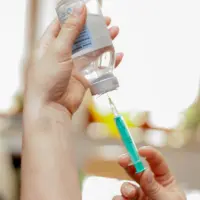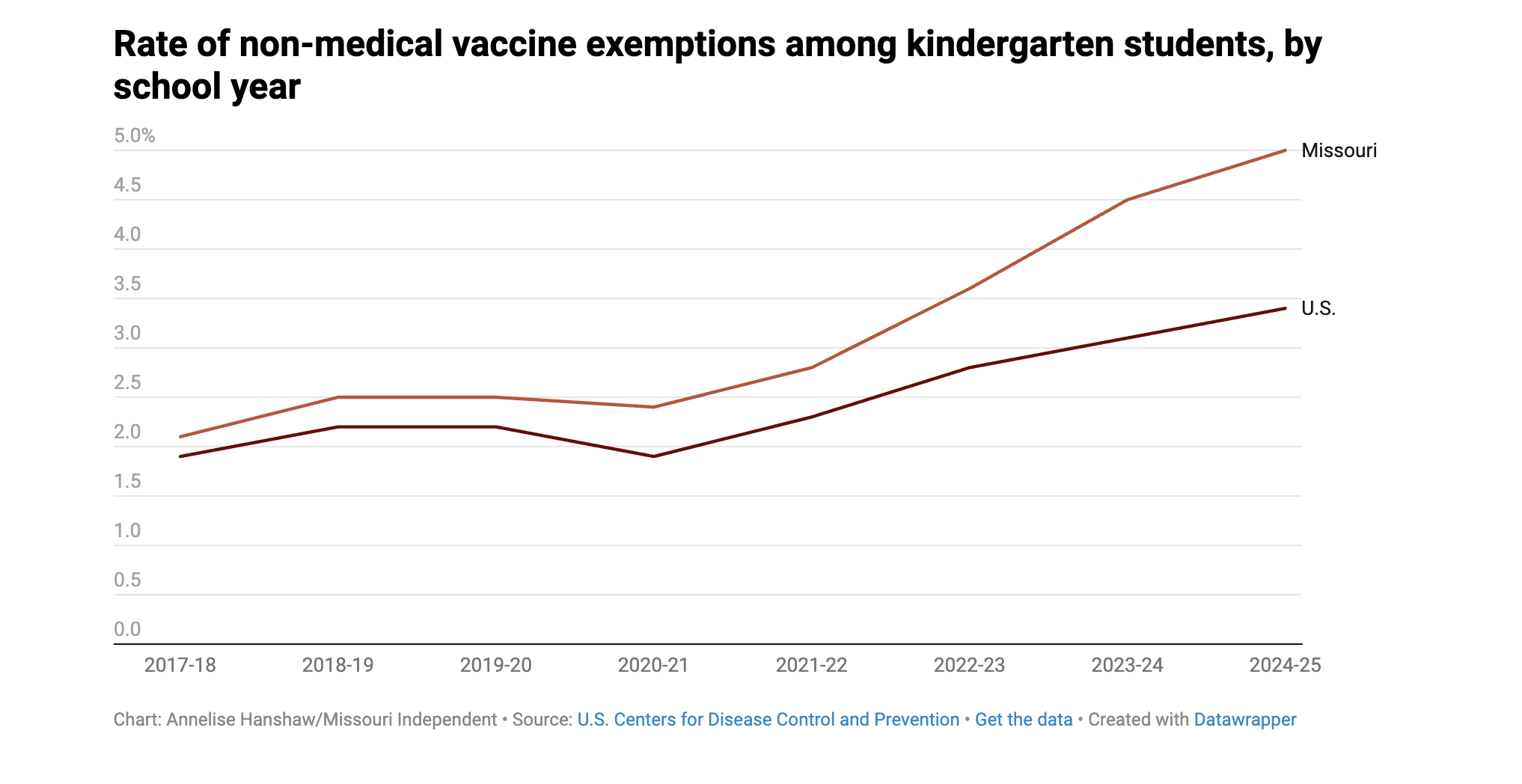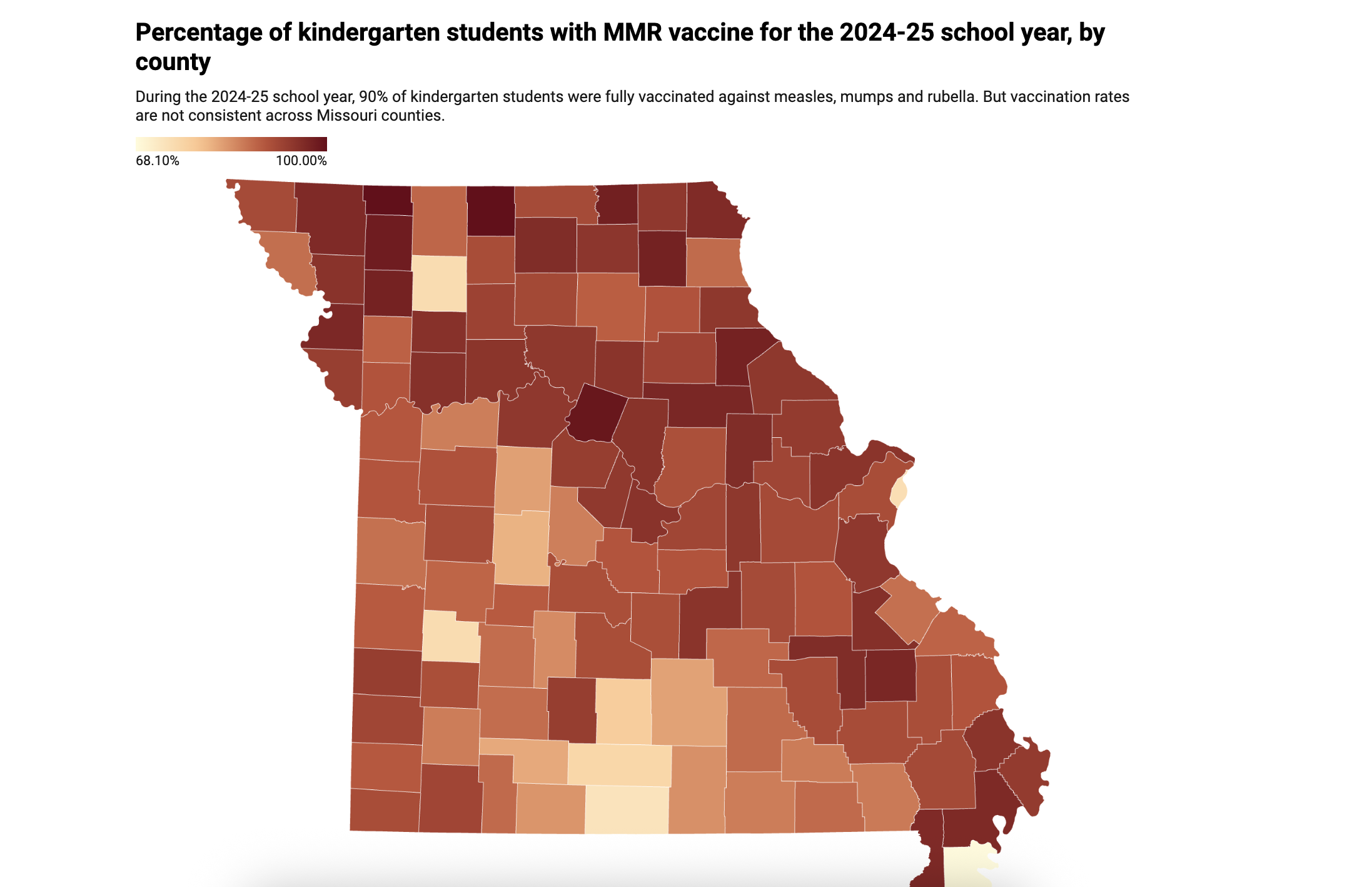
A community needs a vaccination rate of at least 95% to be adequately protected from measles outbreaks. In Missouri, the rate of vaccinated kindergarteners stands at 90%
By: Annelise Hanshaw
Missouri Independent
The percentage of kindergarten students in Missouri vaccinated against diseases like measles and whooping cough is dropping each year as more parents turn in non-medical exemptions prior to their child’s first day of school.
Only 90% of Missouri kindergarten students were immunized against measles, mumps and rubella last year, according to the Missouri Department of Health and Senior Services. That’s down from 94.6% five years prior. Some counties have rates nearing 75%.
According to the CDC and World Health Organization, a community needs a vaccination rate of at least 95% to be adequately protected from measles outbreaks.
“We are sweating,” Dr. Laura Morris, a University of Missouri Health Care family medicine physician and liaison to the CDC’s Advisory Committee on Immunization Practices, told The Independent. “There are a couple of diseases that are very infectious that require really high rates of vaccination to provide herd immunity.”
Missouri exceeds the national average of non-medical exemptions. According to the U.S. Centers for Disease Control and Prevention, 5% of Missouri kindergarteners had non-medical exemptions on file last school year, compared to a nationwide rate of 3.4%.
 at levels not seen since 1992. Seven cases of the disease have been confirmed in Missouri this year — five of which occurred in Cedar County, which has one of the lowest vaccination rates in the state with 74.4% of kindergarteners vaccinated against measles.
at levels not seen since 1992. Seven cases of the disease have been confirmed in Missouri this year — five of which occurred in Cedar County, which has one of the lowest vaccination rates in the state with 74.4% of kindergarteners vaccinated against measles.
It is not just the MMR vaccine worrying health providers. The percentage of kindergarten-aged children with updated DTP vaccines (which protects against diphtheria, tetanus and pertussis) has declined over the past 10 years from 96% to 90% in Missouri.
This is much steeper than the national drop, which went from 94.3% in the 2014-15 school year to 92.1% last year.
Rachel Hassani, director of education and engagement for the Missouri Rural Health Association, told The Independent that family hesitancy as well as access issues are contributing to the declining vaccination rates.
“Across the board, access to care is more limited in rural Missouri. Access to specialists, pediatricians, things like that is far more challenging,” she said. “And these workforce issues are really growing.”

Marvia Jones, director of the Kansas City Health Department, told The Independent that the city has been working to make vaccines more easily available. The health department has extended office hours to be convenient for working parents and scheduled more informational events in the community.
The result is a strong level of vaccination in the majority of the city, but Jones is noticing lower rates in suburban areas like the Northland.
“It is more of a hesitance issue,” she said. “A lot of misinformation and some of the political issues have been added to the discussions around public health vaccination in the past three to five years.”
The trend of lower vaccination rates and more religious exemptions in Missouri begins around the 2020-21 school year, which is when the COVID-19 vaccine was released. That year, only 2.4% of Missouri kindergarteners had a religious exemption from vaccination — less than half the rate of the 2024-25 school year.
“It has been just a big backslide in terms of the misinformation and inaccurate information,” Morris said. “It has become so prevalent to see so many things that are completely inaccurate.”
She has seen misinformation about COVID-19 vaccines spill into patient concerns about regularly scheduled vaccinations.
Health officials hope ease of access and proper education will help reverse the trend. But Missouri and the United States as a whole is also facing newfound systemic issues.
Cuts in the U.S. Department of Health and Human Services has trickled down to Missouri programs. This spring, the Missouri Immunization Coalition shuttered after losing federal funding, and the Missouri Rural Health Association lost a $1 million grant intended to study immunizations in rural health clinics, as reported by St. Louis Public Radio.
And in June, U.S. Health Secretary Robert F. Kennedy Jr., a longtime anti-vaccine activist, replaced all 17 members of the Advisory Committee on Immunization Practices, a group that guides the CDC on vaccine policy.
Morris, a non-voting liaison to the committee, is still serving in an advisory role.
“The process of where those (vaccine) recommendations come from has been subverted over the last couple of months, and that (group) is no longer a source that has the same merit and the same kind of evidence-based background that it previously did,” she said.
Kansas City joined a lawsuit challenging the federal cuts to public health programs. The state has taken no such action.
Since 2021, Missouri lawmakers have spoken against COVID-19 vaccine mandates, filing bills annually that seek to make such mandates illegal.
“It’s hard to know which direction things go. Does our state have less of an appreciation and trust of public health, so it funds it at lower levels? Or because of the low levels of funding, do people see us and respect us as an authority on these matters less?” Jones said. “It is an interesting kind of conundrum.”
Missouri ranks last in per-capita funding of public health, at $7 per person, according to the State Health Access Data Assistance Center.
“We need lawmakers and certainly our medical community to be evidence-driven,” Jones said. “And to not stray away from tried and true public health interventions due to any political leanings.”


